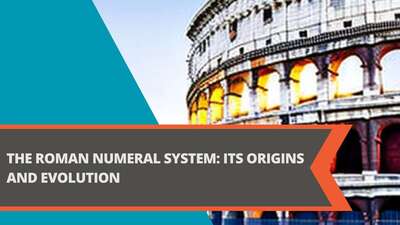The Roman Numeral System: Its Origins and Evolution
The Roman numeral system is a numeric system that uses symbols to represent numbers. It is one of the oldest systems of counting and arithmetic and has been used for thousands of years. The system is based on a set of symbols that are used to represent numbers. These symbols have evolved over time and have been adapted and modified to meet the needs of different cultures and societies.
The Origins of the Roman Numeral System
The Roman numeral system originated in ancient Rome and was used extensively throughout the Roman Empire. The system is based on seven basic symbols, each of which represents a different number:
- I – 1
- V – 5
- X – 10
- L – 50
- C – 100
- D – 500
- M – 1,000
These symbols were used to represent numbers in a variety of contexts, including accounting, trade, and government records. The system was particularly useful because it was easy to read and write and could be used to represent large numbers without the need for complex notation or calculations.
The Evolution of the Roman Numeral System
Over time, the Roman numeral system evolved and was adapted to meet the needs of different cultures and societies. One of the most significant changes to the system was the introduction of the subtractive principle. This principle allowed the use of a single symbol to represent a number that was one less than the next highest number. For example, instead of using IIII to represent the number 4, the symbol IV was used.
Another significant change to the system was the introduction of positional notation. This allowed numbers to be represented using a combination of symbols that indicated their place value. For example, the number 12 could be represented using the symbols XII, where X represents 10 and II represents 2.
As the Roman Empire declined and other cultures came to dominate, the Roman numeral system began to fall out of use. However, it continued to be used in certain contexts, such as the numbering of chapters in books and the designations of monarchs and popes.
The Roman Numeral System in Modern-Day Society
Today, the Roman numeral system is primarily used in formal contexts, such as the numbering of buildings and the representation of dates on monuments and memorials. It is also used in some forms of typography and graphic design.
Despite its limited use in modern-day society, the Roman numeral system remains an important part of the history of mathematics and notation. Its evolution over time reflects the changing needs and priorities of different cultures and societies, and its basic principles continue to inform the way we represent numbers and perform arithmetic today.
Conclusion
The Roman numeral system is an ancient numeric system that has evolved over time to meet the needs of different cultures and societies. From its origins in ancient Rome to its use in modern-day society, the system has been adapted and modified to reflect changing needs and priorities. Despite its limited use in modern times, the system remains an important part of the history of mathematics and notation.







